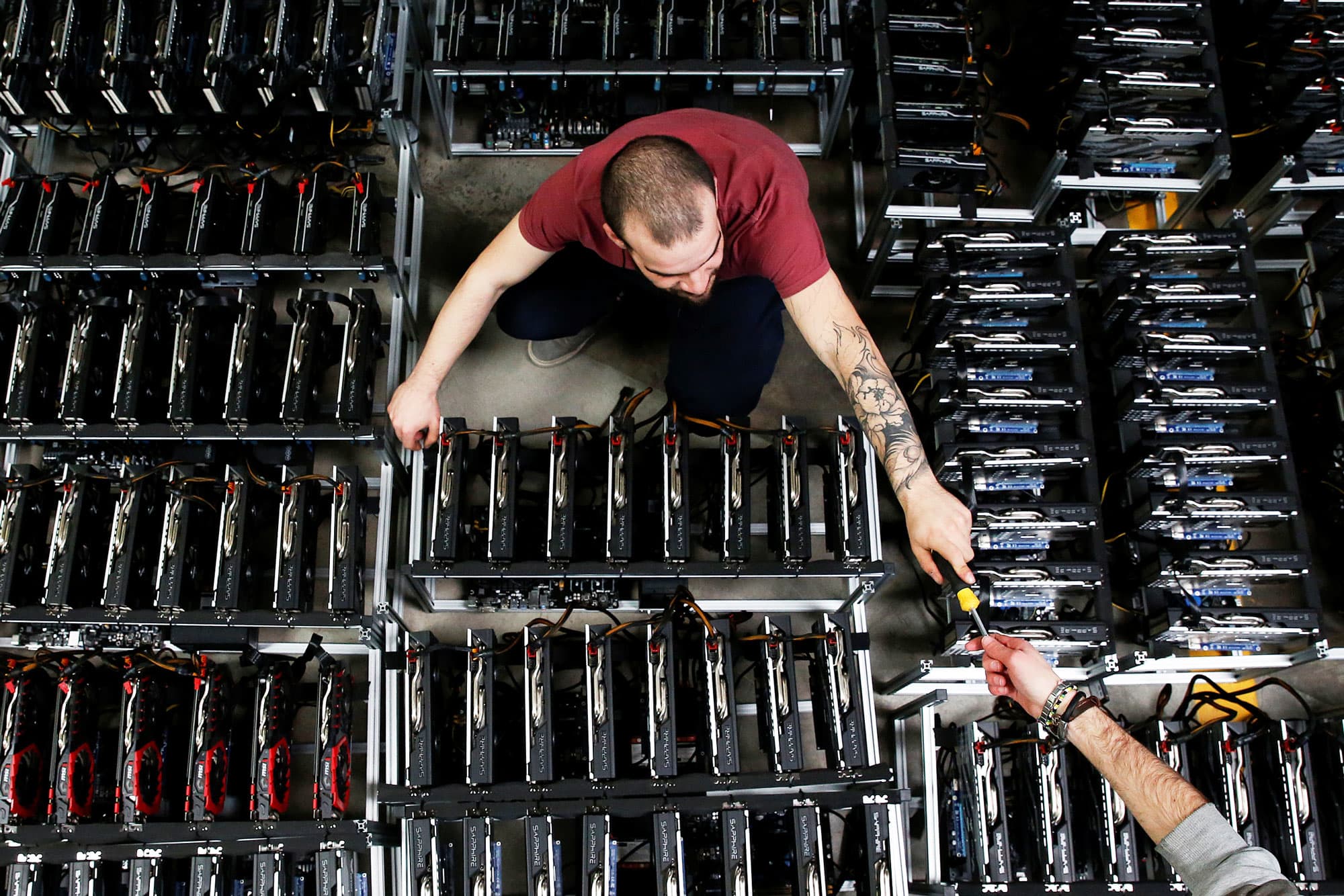
Well before China decided to kick out all of its bitcoin miners, they were already leaving in droves, and new data from Cambridge University shows they were likely headed to the United States.
The U.S. has fast become the new darling of the bitcoin mining world. It is the second-biggest mining destination on the planet, accounting for nearly 17% of all the world's bitcoin miners as of April 2021. That's a 151% increase from September 2020.
"For the last 18 months, we've had a serious growth of mining infrastructure in the U.S.," said Darin Feinstein, founder of Blockcap and Core Scientific. "We've noticed a massive uptick in mining operations looking to relocate to North America, mostly in the U.S."
This dataset doesn't include the mass mining exodus out of China, which led to half the world's miners dropping offline, and experts tell CNBC that the U.S. share of the mining market is likely even bigger than the numbers indicate.
According to the newly-released Cambridge data, just before the Chinese mining ban began, the country accounted for 46% of the world's total hashrate, an industry term used to describe the collective computing power of the bitcoin network. That's a sharp decline from 75.5% in September 2019, and the percentage is likely much lower given the exodus underway now.
"500,000 formerly Chinese miner rigs are looking for homes in the U.S," said Marathon Digital's Fred Thiel. "If they are deployed, it would mean North America would have closer to 40% of global hashrate by the end of 2022."
The new mining mecca
America's rising dominance is a simple case of luck meeting preparation. The U.S. has quietly been building up its hosting capacity for years.
Before bitcoin miners actually started coming to America, companies across the country made a gamble that eventually, if adequate infrastructure were in place, they would set up shop in the U.S.
That gamble appears to be paying off.
When bitcoin crashed in late 2017 and the wider market entered a multi-year crypto winter, there wasn't much demand for big bitcoin farms. U.S. mining operators saw their opening and jumped at the chance to deploy cheap money to build up the mining ecosystem in the States.
"The large, publicly traded miners were able to raise capital to go make big purchases," said Mike Colyer, CEO of digital currency company Foundry, which helped bring over $300 million of mining equipment into North America.
Companies like North American crypto mining operator Core Scientific kept building out hosting space all through the crypto winter, so that they had the capacity to plug in new gear, according to Colyer.
"A majority of the new equipment manufactured from May 2020 through December 2020 was shipped to the U.S. and Canada," he said.
Alex Brammer of Luxor Mining, a cryptocurrency pool built for advanced miners, points out that maturing capital markets and financial instruments around the mining industry also played a big role in the industry's quick ascent in the U.S. Brammer says that many of these American operators were able to start rapidly expanding once they secured financing by leveraging a multi-year track record of profitability and existing capital as collateral.
Covid also played a role.
Though the global pandemic shut down large swaths of the economy, the ensuing stimulus payments that proved a boon for U.S. mining companies.
"All the money printing during the pandemic meant that more capital needed to be deployed," explained bitcoin mining engineer Brandon Arvanaghi.
"People were looking for places to park their cash. The appetite for large-scale investments had never been bigger. A lot of that likely found its way into bitcoin mining operations in places outside of China," continued Arvanaghi.
Making it in America
The seeds of the U.S. migration started back in early 2020, according to Colyer. Prior to Beijing's sudden crackdown, China's mining dominance had already begun to slip.
Part of the appeal is that the U.S. ticks a lot of the boxes for these migrant miners.
"If you're looking to relocate hundreds of millions of dollars of miners out of China, you want to make sure you have geographic, political, and jurisdictional stability. You also want to make sure there are private property right protections for the assets that you are relocating," said Feinstein.
It also helps that the U.S. is also home to some of the cheapest sources of energy on the planet, many of which tend to be renewable. Because miners at scale compete in a low-margin industry, where their only variable cost is typically energy, they are incentivized to migrate to the world's cheapest sources of power.
Thiel expects most new miners relocating to North America to be powered by renewables, or gas that is offset by renewable energy credits.
While Castle Island Ventures founding partner, Nic Carter, points out that U.S. mining isn't wholly renewable, he does say that miners here are much better about selecting renewables and buying offsets.
"The migration is definitely a net positive overall," he said. "Hashrate moving to the U.S., Canada, and Russia will mean much lower carbon intensity."
"how" - Google News
July 17, 2021 at 07:55PM
https://ift.tt/3evVq9Y
How the U.S. became the world's new bitcoin mining hub - CNBC
"how" - Google News
https://ift.tt/2MfXd3I
https://ift.tt/3d8uZUG
Bagikan Berita Ini















0 Response to "How the U.S. became the world's new bitcoin mining hub - CNBC"
Post a Comment